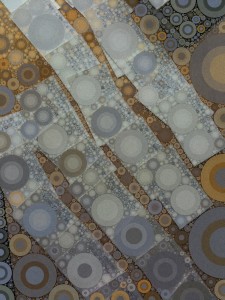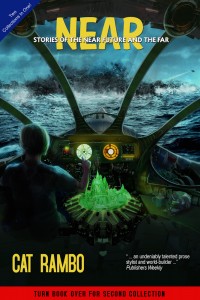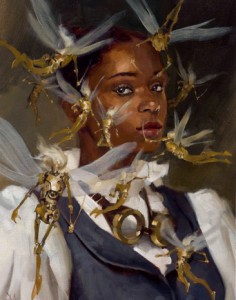 A metaphor that I was exposed to at Clarion West (now nearly a decade ago) still works beautifully for me, and it’s one I use when teaching: the idea of the writer’s toolbox.
A metaphor that I was exposed to at Clarion West (now nearly a decade ago) still works beautifully for me, and it’s one I use when teaching: the idea of the writer’s toolbox.
In my mind’s eye, it’s a big red metal tool chest, small enough to be carried around, large enough that you wouldn’t want to HAVE to carry it around all the time. Inside, drawers lift out to reveal neatly packed devices and tools, each in their own padded slot.
There’s a blade capable of lopping off awkward paragraphs, and sharper, tinier words designed for work at the sentence level, trimming beginnings till they catch a reader like a fish hook and pull them into the story. There’s a box of punctuation marks, with a special slot for the semicolons. There’s the intricate device of an unreliable narrator, calculated to wobble like a gyroscope yet still remain true to the story’s course. There’s a set of filters, each one a specific point of view, each letting you cast a section in a different light. And a layer of ornamental gadgetry: epigraphs and scraps of poetry. And a valuable gimlet, capable of drilling down to a character’s motivation: the question, “What does s/he WANT?”
Even this metaphor’s a device (and if you want to know more about metaphor, I can do no better than point you at Chuck Wendig’s excellent piece, in which he’s said everything I’d say and then quite a bit more).
I’ve been thinking about it in going over notes for the class on Literary Techniques in Genre Fiction, because my aim in that is two-fold: to give students not just a whole bunch of new tools, but some sense of when to use them and a chance to experiment with them. Because a device shouldn’t be separate from a story, but an integral part of it, something that adds more to it than just a chance to see the writer being clever.
To push the metaphor a little further, stories are like furniture, only without the useful part, like being able to sit on them. You want them to feel like a single piece, not a table with some drawers and ornamental hinges glued on it. In the class, I try to introduce new tools students may not have (consciously) worked with before, including defamiliarization, hyperbole, synthesia, and a lot of other fancy words. And I also try to expand a drawer they’ve already got partially filled: sources of creative inspiration.
Enjoy this writing advice and want more content like it? Check out the classes Cat gives via the Rambo Academy for Wayward Writers, which offers both on-demand and live online writing classes for fantasy and science fiction writers from Cat and other authors, including Ann Leckie, Seanan McGuire, Fran Wilde and other talents! All classes include three free slots.
Prefer to opt for weekly interaction, advice, opportunities to ask questions, and access to the Chez Rambo Discord community and critique group? Check out Cat’s Patreon. Or sample her writing here.






